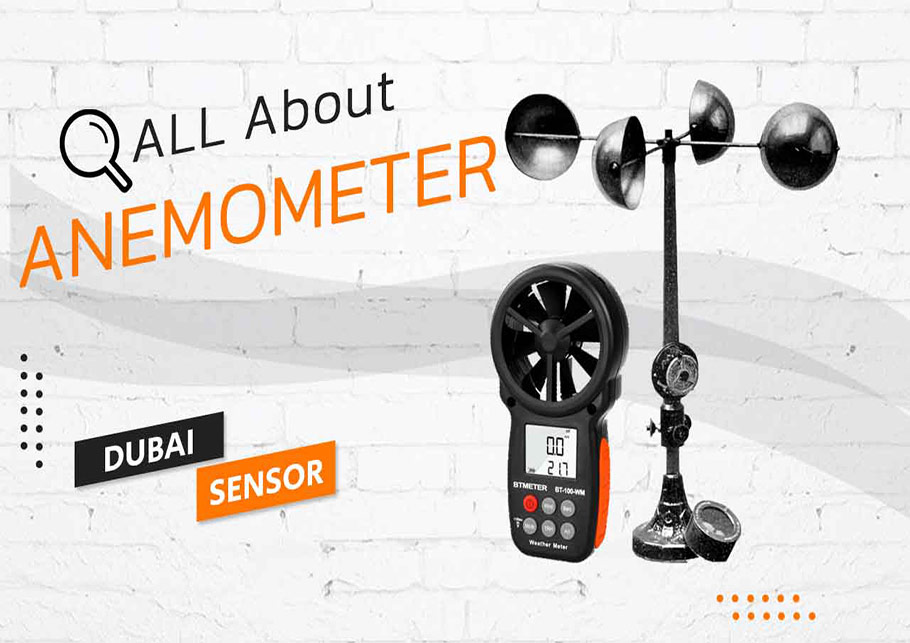Comparing Digital and Mechanical Anemometers: Which is Right for You?
Comparing Digital and Mechanical Anemometers: Which is Right for You?
Blog Article
Anemometers Introduced: Understanding Their Significance in Environmental Monitoring and Precaution
The role of anemometers in ecological surveillance and security actions is typically taken too lightly, yet their relevance is indisputable. From meteorology to aeronautics security, anemometers play a critical duty in supplying precise information that educates decision-making processes and enhances total safety and security.
Background of Anemometers
The evolution of anemometers can be mapped back to the ancient worlds where primary wind gauging gadgets were very first made use of. One of the earliest well-known anemometers was the hemispherical cup anemometer created by Leon Battista Alberti in the 15th century.
In the 18th century, the prominent researcher John Thomas Romney Robinson presented the Robinson anemometer, which featured four hemispherical cups mounted on horizontal arms that prolonged from a main axis. This design ended up being a criterion in meteorological measurements because of its precision and integrity. For many years, developments in technology caused the development of more contemporary anemometers, consisting of ultrasonic anemometers and laser Doppler anemometers, using boosted accuracy and effectiveness in determining wind rate and direction. The background of anemometers showcases an impressive trip of innovation and progress in the field of weather forecasting.
Kinds Of Anemometers
Throughout the field of meteorology, various kinds of anemometers have been developed to properly gauge wind speed and direction. One of the most common kind is the mug anemometer, which includes three or four cups mounted on straight arms that rotate with the wind. As the mugs rotate, the speed at which they rotate is straight proportional to the wind rate. An additional commonly used kind is the vane anemometer, which features a tail or fin that straightens itself with the wind instructions. This placement enables the device to determine the wind instructions. Sonic anemometers use ultrasonic signals to measure wind rate and instructions properly. They are generally made use of in research study applications due to their high accuracy. Hot-wire anemometers operate based upon the principle that the cooling effect of wind on a heated cord is proportional to the wind rate. These anemometers are suitable for gauging reduced wind speeds with high accuracy. Each sort of anemometer has its staminas and is picked based on the certain requirements of the tracking job available.
Applications in Meteorology
Having actually reviewed the various types of anemometers utilized in weather forecasting for measuring wind rate and direction, it is vital to discover their practical applications in the field. Anemometers play a vital duty in weather forecasting by providing real-time and accurate data on wind problems (anemometer). Meteorologists use anemometers to monitor wind speed and direction to forecast weather patterns, problem cautions for serious weather condition events like hurricanes, cyclones, and tornados, and evaluate weather for aeronautics safety and security
In weather forecasting, anemometers assist in comprehending local and local wind patterns, which are vital for predicting climate changes and figuring out weather fads. These gadgets are also used in study to examine microclimates, city warmth islands, and air pollution dispersion. In addition, anemometers are utilized in agriculture to maximize plant monitoring methods, such as irrigation and chemical application, based on wind conditions.
Importance in Aviation Safety And Security
An indispensable facet of making sure aviation safety lies in the precise monitoring of wind conditions using anemometers. Anemometers play an essential duty in air travel by offering real-time data on wind speed and instructions, helping pilots in making informed choices during touchdown, flight, and take-off. Unpredictable and solid winds can substantially affect airplane procedures, making it crucial for aviation authorities to count on accurate wind measurements to guarantee the safety and security of guests and crew.

In the dynamic environment of aviation, where even minor adjustments in wind rate and instructions can have extensive effects, anemometers stand as indispensable devices for advertising secure and secure air travel.
Function in Environmental Research
Anemometers play an essential function in ecological research study by giving essential information on wind speed and direction. By properly gauging wind characteristics, anemometers help researchers evaluate the motion of pollutants in the air, evaluate the impact of commercial emissions, and forecast the spread of impurities in the setting.


Verdict
Finally, anemometers have played a vital role in environmental surveillance and security steps. With a rich background and numerous types offered, these devices have actually been commonly made use of in meteorology, aviation security, and ecological research study. Recognizing the value of anemometers is necessary for accurately measuring wind rate and instructions, which is crucial for forecasting weather patterns, making certain secure aviation procedures, and carrying out environmental researches - anemometer. Their payments to these areas can not be undervalued.
One of the earliest known anemometers was the hemispherical cup anemometer developed by Leon Battista Alberti in the 15th century. Over the years, improvements in modern technology led to the advancement of more modern anemometers, consisting of ultrasonic anemometers and laser Doppler anemometers, providing raised accuracy and performance in gauging wind rate and direction. Hot-wire anemometers run based on the principle that the like this cooling result of wind on find more information a warmed wire is symmetrical to the wind speed. Meteorologists use anemometers to monitor wind rate and direction to forecast climate patterns, problem warnings for extreme climate events like typhoons, twisters, and tornados, and evaluate atmospheric conditions for aviation safety and security.
Comprehending the importance of anemometers is important for accurately measuring wind rate and instructions, which is crucial for predicting weather condition patterns, making certain risk-free aviation procedures, and carrying out environmental studies. (anemometer)
Report this page